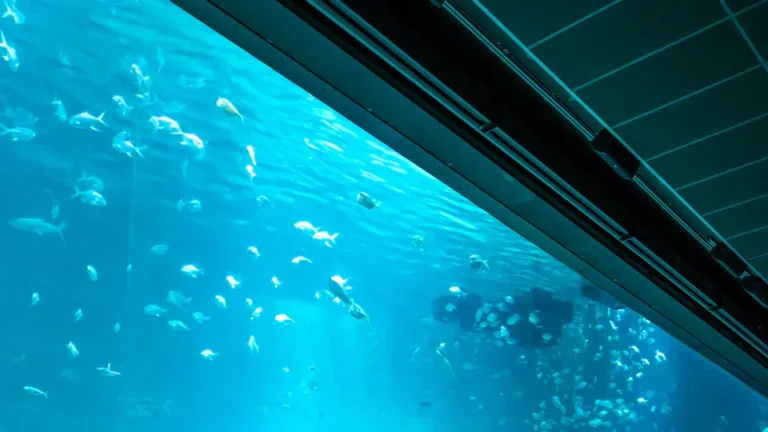Активированный уголь в аквакультуре
.webp)
Buy Aquaculture Activated Carbon
Проблемы отрасли
Environmental and Production Constraints
- Tightening regulations on manufacturing emissions
- Sustainable sourcing difficulties for raw materials
- Supply chain instability affecting quality consistency
Technical Performance Limitations
- Non-selective adsorption of beneficial nutrients
- Rapid saturation in nutrient-rich water requiring frequent replacement
- Temperature-dependent efficiency fluctuations
- Clogging issues in filtration systems
Operational Integration Challenges
- Complex monitoring requirements for water parameters
- Poor system integration causing inefficiencies
- Difficulty balancing toxin removal with ecosystem preservation
Innovation and Standardization Gaps
- Fragmented industry with limited R&D capabilities
- Slow development of specialized bio-enhanced variants - Lack of uniform performance benchmarks
- Lack of uniform performance benchmarks
- Insufficient real-world validation data
различные виды активированного угля
-r8fslg51nt6wgjtvh6yldxb1gtkgm3lpe0oq1akgog.webp)
- Содержание йода: 600-1200
- Размер ячейки: 1×4/4×8/8×16/8×30/12×40/20×40/20×50/30×60/40×70 (другие размеры по запросу)
- Кажущаяся плотность: 400-700
-r8fsli0q1h9h3rr567ruiwtynlb71ht629zozuhoc0.webp)
- Содержание йода: 500-1300
- Размер ячейки: 0,9-1 мм/1,5-2 мм/3-4 мм/6 мм/8 мм (другие размеры по запросу)
- Кажущаяся плотность: 450-600
-r8fslbfupn0gui0p8mxgjghqhw7mjm31pdfamwrfjk.webp)
- Содержание йода: 500-1300
- Размер ячеек: 150/200/300/350 (другие размеры по запросу)
- Кажущаяся плотность: 450 - 550
-r8fsle9da54btbwls65c8xs4a1tq6pe8prdr2qn90w.webp)
- Содержание йода: 400-800
- Размер ячейки: 100×100×100 мм/100×100×50 мм (плотность ячеек по запросу)
- Кажущаяся плотность: 350-450
- Диаметр отверстия:1,5-8 мм

- Содержание йода: 700-1200 мг/г
- Площадь поверхности: 700-1200 м²/г
- Кажущаяся плотность: 320-550 кг/м³

- Содержание йода: 700-1200 мг/г
- Площадь поверхности: 700-1200 м²/г
- Кажущаяся плотность: 320-550 кг/м³

- Содержание йода: 700-1200 мг/г
- Площадь поверхности: 700-1200 м²/г
- Кажущаяся плотность: 300-650 кг/м³

- Содержание йода: 700-1200 мг/г
- Площадь поверхности: 700-1200 м²/г
- Кажущаяся плотность: 320-550 кг/м³

- Метод активации: Паровая/газовая активация при высоких температурах
- Структура пор: С преобладанием микропор, равномерное распределение пор
- Экологический профиль: Без химикатов, с низким содержанием золы
- Основные области применения: Газофазная адсорбция, очистка питьевой воды

- Метод активации: Химическая активация (например, H₃PO₄/ZnCl₂) при умеренных температурах
- Структура пор: Мезопористая, с высокой площадью поверхности
- Эффективность процесса: Сокращение времени активации, более высокий выход 30-50%
- Постобработка: Для удаления остатков требуется кислотная промывка

- Функционализация: Насыщенные активными агентами (например, I₂/Ag/KOH)
- Целевая адсорбция: Усиленное улавливание конкретных загрязняющих веществ (например, Hg⁰/H₂S/кислотных газов)
- Персонализация: Химическая оптимизация для целевых загрязнений
- Основные области применения: Очистка промышленных газов, защита от ХБРЯ
Почему стоит использовать наш активированный уголь

Enhanced Adsorption Efficiency:
Our activated carbon features optimized pore structure and surface chemistry for superior removal of aquaculture-specific contaminants like ammonia, nitrites, and dissolved organics.

Eco-Friendly Material Sourcing
We utilize sustainably harvested raw materials with verified traceability to ensure minimal environmental impact throughout the product lifecycle.

Extended Operational Longevity:
Engineered for slower saturation rates and reduced clogging, our carbon maintains peak performance longer under high-load aquaculture conditions.
Common Solutions and Applications of Activated Carbon in Aquaculture
1. Wastewater Treatment in Membrane Bioreactors (MBR-PAC Systems)
Обзор решений
Powdered Activated Carbon (PAC) use integrated with submerged Membrane Bioreactors (MBR) to treat salted aquaculture wastewater. The addition of PAC increases the removal of pollutants and reduces membrane fouling from salinity variability and organic loads.
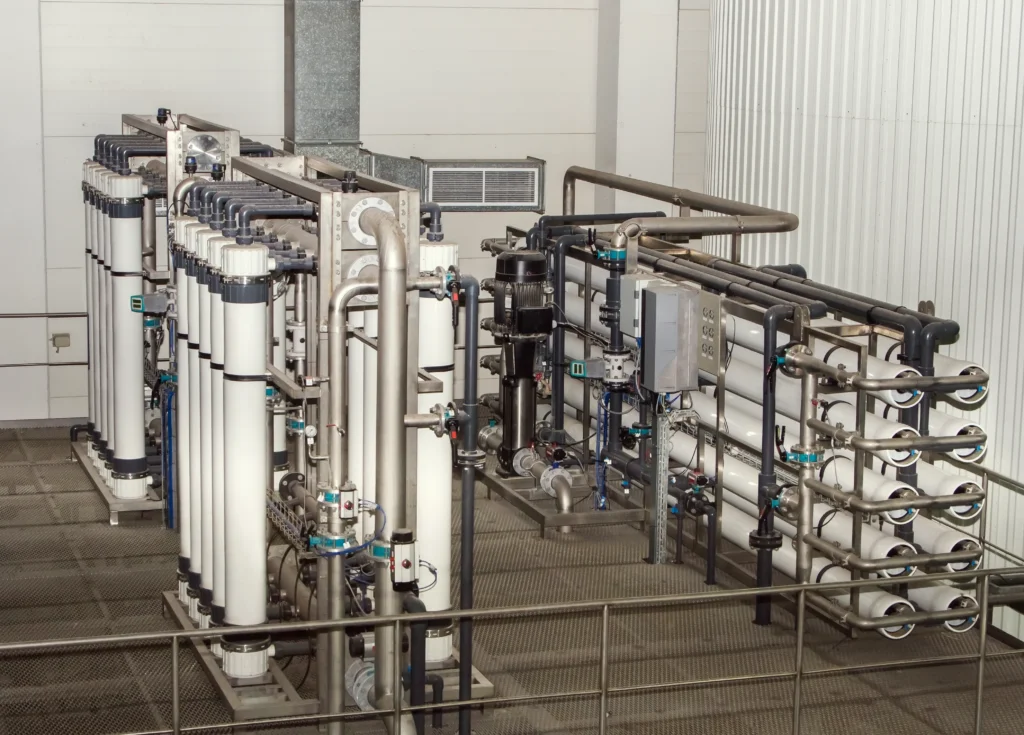
Ключевые преимущества
- Improved Pollutant Removal: Significantly boosts COD, ammonia nitrogen (NH₄⁺-N), and nitrite nitrogen (NO₂⁻-N) removal efficiency compared to standalone MBR systems.
- Enhanced Membrane Performance: Reduces fouling by adsorbing soluble microbial products (SMP) and extracellular polymeric substances (EPS), extending membrane lifespan and maintaining stable flux.
- Salinity Resilience: Maintains treatment stability during salinity shocks by adsorbing dissolved organics and reducing protein content in sludge flocs.
- Larger Floc Formation: Promotes sludge aggregation, increasing particle size and improving solid-liquid separation.
2. Recirculating Aquaculture Systems (RAS) for Advanced Purification
Обзор решений
Biological Activated Carbon (BAC) filters are used in RAS for post-treatment after mechanical and biological filtration. Microorganisms colonize the carbon surface, enabling simultaneous adsorption and biodegradation of pollutants.
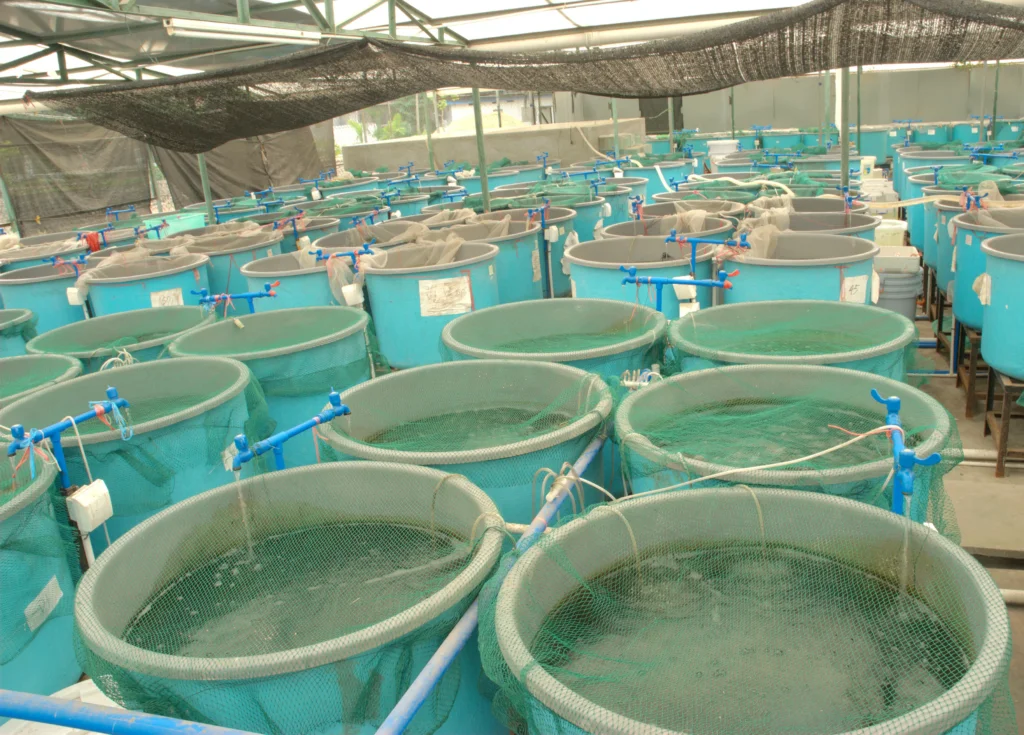
Ключевые преимущества
- Effective Nitrogen Compound Removal: Achieves high removal rates of ammonia and nitrite through microbial degradation, meeting stringent water reuse standards.
- Water Reusability: Produces effluent suitable for recirculation, reducing freshwater dependency and minimizing environmental discharge.
- Dual Adsorption-Biodegradation: Combines physical adsorption of organics/COD with biological degradation, enhancing overall treatment efficiency.
- Adaptability to Low Loads: Efficiently treats trace pollutants even at low inlet concentrations, unlike conventional activated carbon.
3.Biofloc Technology (BFT) Carbon Source Supplementation
Обзор решений
Activated carbon serves as a carbon source in biofloc systems to adjust the carbon-to-nitrogen (C/N) ratio. This stimulates heterotrophic bacterial growth, converting toxic nitrogen compounds into microbial protein (bioflocs).
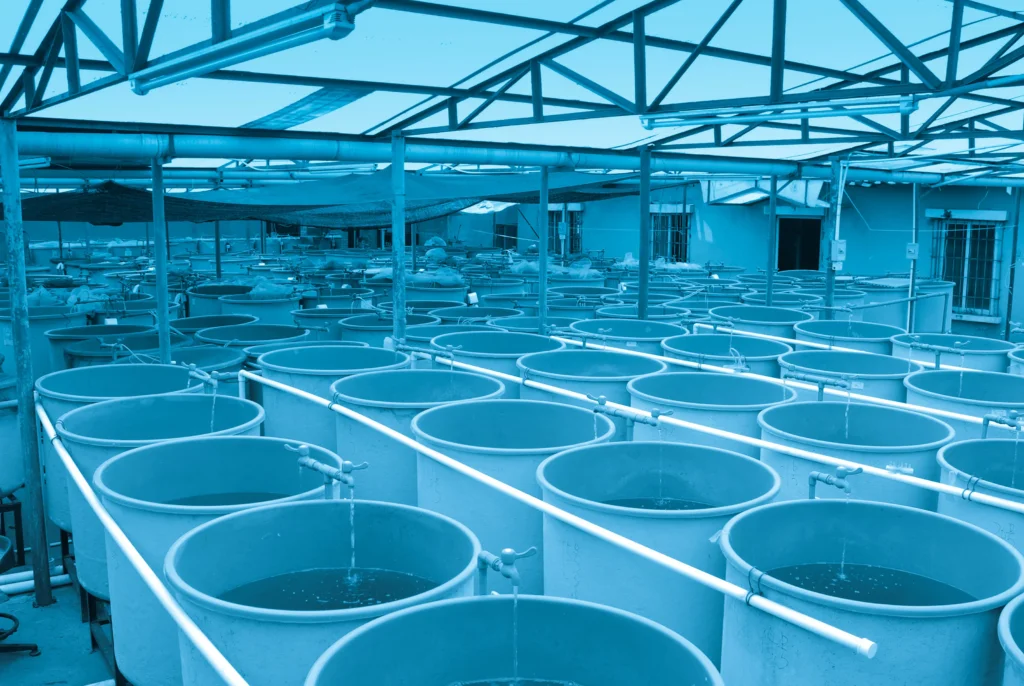
Ключевые преимущества
- Toxin Conversion: Accelerates transformation of ammonia and nitrite into non-toxic bioflocs, improving shrimp/fish survival rates.
- Water Quality Stabilization: Reduces accumulation of harmful nitrogen compounds and maintains balanced microbial communities.
- Nutritional Supplement: Bioflocs serve as supplemental feed, enhancing growth efficiency and reducing feed costs.
- System Resilience: Mitigates water exchange requirements and supports disease resistance in intensive farming.
4. Dedicated Purification for Seafood Holding Tanks
Обзор решений
Granular activated carbon (GAC) is integrated into filtration units of seafood holding tanks (e.g., restaurants, supermarkets) to adsorb impurities and maintain water clarity during live seafood storage.
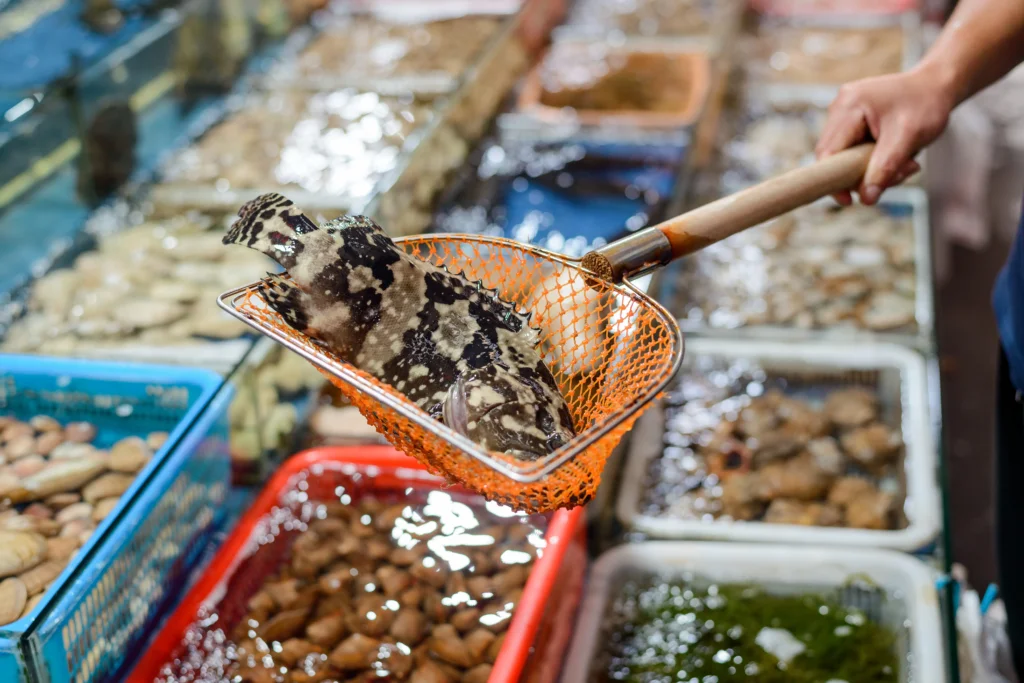
Ключевые преимущества
- Multi-Contaminant Removal: Efficiently adsorbs residual chlorine, heavy metals, odors, and organic matter, ensuring a clean habitat.
- Extended Seafood Vitality: Preserves dissolved oxygen levels and reduces stress, prolonging seafood survival and freshness.
- Algae and Odor Control: Inhibits algal blooms and eliminates (fishy odors), enhancing visual and olfactory water quality.
- Ease of Deployment: Simple installation in filter bags/cartridges with minimal maintenance.
5. Emergency Water Quality Management
Обзор решений
Activated carbon is used as a short-term intervention to adsorb sudden surges of organic pollutants, medications (e.g., antibiotics), or toxins during water quality crises.
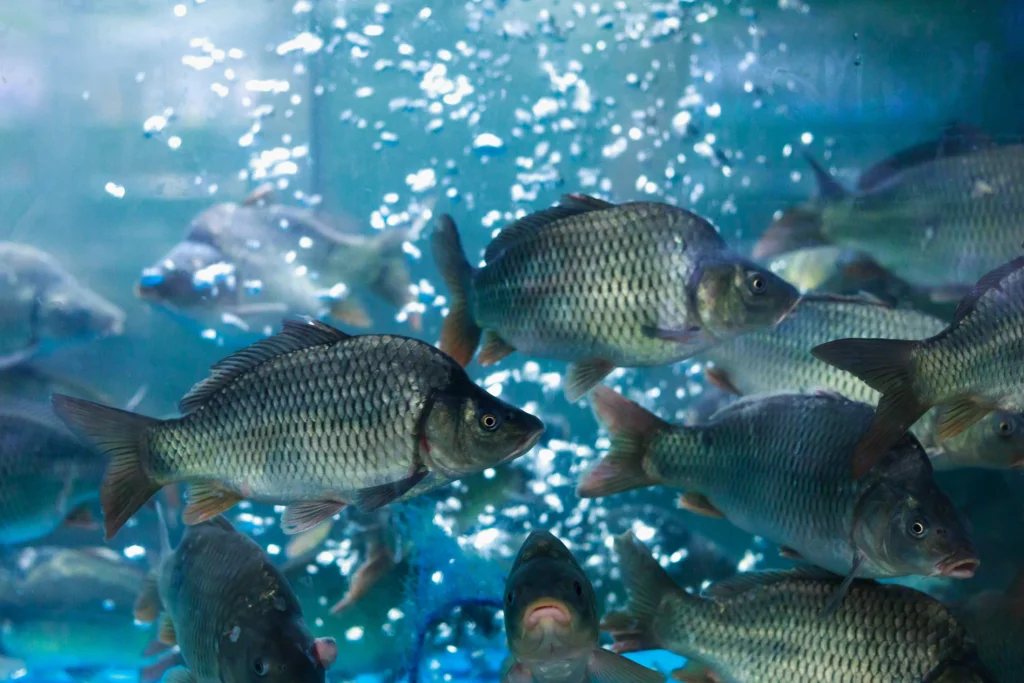
Ключевые преимущества
- Rapid Contaminant Adsorption: Quickly binds organic toxins, residual drugs, and hydrogen sulfide, preventing acute toxicity.
- Water Clarity Restoration: Removes turbidity and discoloration caused by dissolved organics or algal byproducts.
- Non-Disruptive Application: Compatible with existing systems without altering water chemistry parameters like pH.
- Temporary Nitrification Support: Lowers carbon-to-nitrogen ratio to aid (nitrification) system recovery during imbalances.

